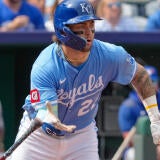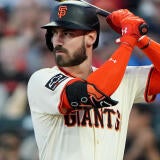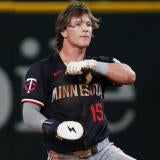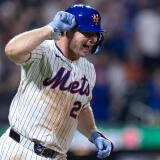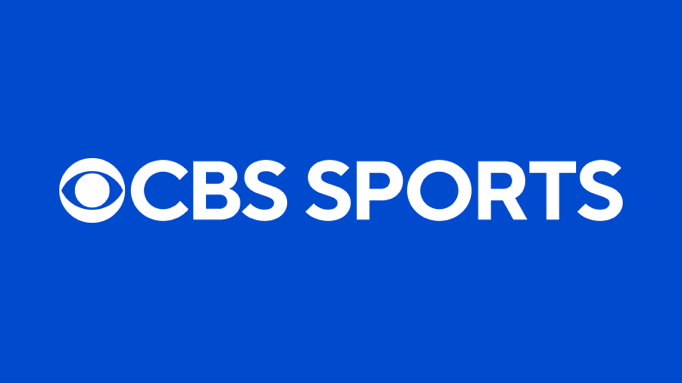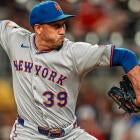Fantasy baseball waiver wire: Top adds and standout performances from Aaron Nola and Bryan Woo
Drake Baldwin now has a clear path to Fantasy success with Sean Murphy out of the lineup
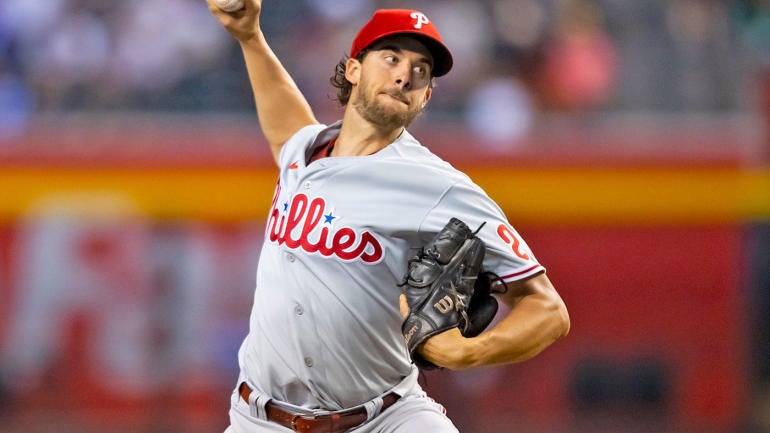
Ranking players for Fantasy Baseball is tough enough, but what really makes ranking relievers a pain in the neck is that we're not just trying to predict which players will pitch better (often with tiny sample sizes to go on); we're also trying to predict how managers will use their pitchers and who will gain and then keep their manager's trust.
But sometimes it's easy. With Daniel Palencia placed on the IL Monday, Brad Keller seems all but certain to step into the closer role for the Cubs. He has been the team's primary eighth-inning guy lately, last appearing prior to the eighth inning on Aug. 19; he has appeared before the eighth just twice since the start of July. That covers a still-active stretch where Keller has gone 20 straight appearances without allowing a run.
Which is all to say, Keller should be up for the job. Pitching in a single-inning relief role for the first time in his career has led to a huge velocity increase, and he's now averaging 97.1 mph with his fastball. His 26% strikeout rate isn't necessarily elite for a high-leverage reliever, but it's still quite good, especially when paired with a 57% groundball rate. Add it all up, and Keller has a 2.17 ERA and 2.82 xERA for the season, and, while you can never know how a pitcher will handle the stress of the ninth inning, what Keller has shown this season makes me confident he can get the job done. He might be a difference maker down the stretch if you're chasing saves.
Tuesday's top waiver-wire targets
Drake Baldwin, C, Braves (60%) – With Sean Murphy set to undergo hip surgery, Baldwin's runway is finally clear to play every day. It's a bummer it's only happening for the final two and a half weeks of the season, but if you're in need of a catcher upgrade, you should be leaping at the opportunity to add Baldwin, whose only real downside this season has been playing time – he ranks fifth among all catchers in wOBA on the season now, and would be one of the best players at the position if he had more consistent playing time. He'll get that down the stretch, at least.
Kyle Manzardo, 1B, Guardians (50%) – Manzardo's roster rate is probably going to stay pretty low with so many teams out of the running, so I can't just write about him as a waiver-wire add every single day. But if he's available in your league and you need a first baseman, corner infielder, or DH, Manzardo really should be at or near the top of your list right now. He's hitting .281/.378/.525 since the All-Star break and has seemingly convinced the Guardians to entrust him with an everyday role since they got rid of Carlos Santana, as he has started the last three games against lefties. If Manzardo truly is an everyday player now, he probably just needs to be in lineups everywhere down the stretch.
Austin Hays, OF, Reds () – I don't know if anyone but me has noticed this, but: Hays' 155-game is currently: 25 homers, 94 runs, 108 RBI, and 10 steals with a .265 batting average. The reason you may not have noticed, at least in part, is because he has just a .705 OPS since returning from the IL in late June, though even in that timespan, he's on an 86-run, 103-RBI pace. He hasn't been a hugely impactful player, but he's been a productive one in the middle of the Reds lineup and deserves to be more rostered than his 41% rate.
Here's what else you need to know about from Monday's action around MLB:
Monday's standouts
Aaron Nola, Phillies vs. NYM: 6 IP, 3 H, 0 ER, 2 BB, 7 K
Is this enough to earn our trust back? Not by a long shot. It was great to see Nola pitch well Monday, and given his track record, I wouldn't exactly be shocked if he went on to close out the season with a few more excellent starts after this one. Maybe he has figured something out, though I don't exactly see a ton in the underlying data to suggest Nola turned back the clock – his nine swinging strikes on 94 pitches is a pretty underwhelming result, and he seemed to benefit from an unusually passive approach at the plate by the Mets that allowed him to steal early strikes and get ahead. He deserves some credit for that, certainly, but with a 6.78 ERA and 4.91 xERA entering this start, we need a lot more than just one pretty good start to buy into Nola again. I'm not sure I'm going to rank him even as a top-50 starter next season.
Bryan Woo, Mariners vs. STL: 6 IP, 3 H, 2 ER, 0 BB, 9 K
After a slight stumble in his previous two starts, Woo got back on track with one of his best of the season. The matchup helped here, as the Cardinals have the worst offense in baseball in the second half, but Woo has proven he can more than hold his own against even very good lineups this season. He pounded the zone (64% in-zone rate is huge) and the Cardinals mostly couldn't do anything with his fastball-heavy approach, especially with the four-seamer up in the zone, which had eight whiffs. Woo has established himself as one of the best pitchers in baseball this season, but he still seems likely to go closer to the bottom of the top-15 starters in 2026 because he's at a strikeout deficit compared to most other pitchers in that range. But what I love about Woo is the pairing of a super-high floor – his fastball combo is so good at limiting damage on contact that he doesn't need to generate huge strikeout numbers to be successful – with room for another leap if he decides to incorporate his multiple good swing-and-miss secondaries more consistently. I've made the comp before, but I really think Woo could be like Zack Wheeler, where he just kept getting a little better every season until he was suddenly one of the three best pitchers in baseball. I think Woo could have that upside someday.
Royce Lewis, 3B, Twins: 2 for 5, 2 HR, 2 R, 4 RBI
I'm at the point with Lewis where I'm done with the small-sample-size theater. I don't really care what he's looked like at his best, and I don't really care what he's looked like at his worst; I'm just looking at the whole picture now. And with 240 games and nearly 1,000 plate appearances under his belt, Lewis is a .256/.314/.458 hitter with 29 homers, 98 RBI, 76 runs, and nine steals per-162 games. He's hot right now (and has been running a bunch, with six of his 13 career steals in his past 20 games), and I'm sure there's more upside here than his total career numbers show. But if you're asking me what I expect from Lewis moving forward, the overall production is going to be my starting point. And that's a viable starter at third base, though probably not the superstar we once thought we were going to get. Add in ever-present injury concerns, and Lewis probably belongs in the 12-15 range at third base for 2026.
Tyler Glasnow, Dodgers vs. COL: 7 IP, 0 H, 1 ER, 2 BB, 11 K
In yesterday's newsletter, I said I was "leaning" toward sitting Glasnow, but if I knew for certain he would be making this start against the Rockies, I absolutely would have had him in my lineup. Because that's what we do with Tyler Glasnow: If he's healthy, we start him. He has this kind of upside against any matchup, but especially against one like the Rockies away from Coors Field. He's one of the game's premier strikeout artists, and he typically provides standout ratios. This has been a challenging season for Glasno, even by his standards, as even 90 innings might be a stretch at this point. And, obviously, ranking and drafting him is a lot less straightforward than how you handle him once he's on your team, because he's an ace who has never thrown more than 134 innings in a season. You know he's going to miss some time, and you know he's going to be dominant when he's on the mound. He was drafted just inside the top-100 on average last season, and I'd bet that goes down after this season. I might be willing to buy that dip.
Shota Imanaga, Cubs @ATL: 6 IP, 5 H, 3 ER, 0 BB, 4 K
It's a credit to Imanaga that he has managed to maintain a solid 3.21 ERA and elite 0.93 WHIP this season despite the diminishing skills he has shown, but we shouldn't just ignore those skills, either. He finished Monday with a quality start against the Braves and now has seven straight quality starts, which is terrific. But he also has a 4.55 FIP and just a 20.2% strikeout rate, down from 25.1% last season. Given the time he missed with a hamstring injury, I might be inclined to give Imanaga a bit of the benefit of the doubt for his 2026 value, but the fact that he's already 32 makes it harder to project a bounce back. It might happen, but unless Imanaga falls outside of the top-30 SPs next season, I think I'll be inclined to let someone else make that bet.
Luis Morales, Athletics vs. BOS: 4.2 IP, 7 H, 5 ER, 1 BB, 2 K
We spend a lot of time both in the FBT Newsletter and on the podcast talking about young, upside arms, and one thing I'm not sure we do enough is emphasize that these are inherently volatile assets. We're chasing upside, and Morales has shown plenty lately, with 26 strikeouts to just four runs allowed in 23.2 innings over his four starts entering Monday. But it's also a very small sample size of success we're dealing with, from a fringe top-100 prospect who had a 4.40 ERA (and significantly worse peripherals) at Triple-A before his promotion, so caution was always warranted. I didn't necessarily expect Morales to struggle like this, but I'm also not exactly surprised this happened, especially in Sacramento – that might be the most unfriendly park for pitchers outside of Coors Field right now. I still think Morales has a bright future, and an advantageous rest-of-season schedule makes him a viable starter even coming off this start. But he's no sure thing, despite his early success.
Jakob Marsee, OF, Marlins: 2 for 4, 1 HR, 1 2B, 1 R, 1 RBI
Marsee was starting to slow down before this one, hitting just .200 with one extra-base hit in his previous nine games. But this kind of slowdown was probably always coming – I don't believe Marsee is one of the best hitters in baseball, suddenly – and his overall skill set still looks extremely strong. Marsee remains a patient hitter with good bat-to-ball skills and good enough pop, including a very strong 90.3 mph average exit velocity and an above-average 9.4% barrel rate. And he's an aggressive base runner with 10 steals in 38 games in the majors and 47 more in 98 games at Triple-A this season. I think he'll settle in as a high-.700s OPS bat who lives on base and makes pitchers miserable when he gets there, with enough power to not be a zero there. I think a reasonable expectation for 2026 might be something like Maikel Garcia, but he's shown upside that could turn into something like 2023 Jarren Duran. I think Marsee is trending toward being a top-36 outfielder next season.
Ozzie Albies, 2B, Braves: 1 for 4, 1 HR, 1 R, 1 RBI
Albies might be back, and this might be the tell: His homer off Shota Imanaga Monday was his fourth off a lefty in the past two weeks, after he didn't hit a single one in the first nearly five months of the season. The book on Albies has always been that he just keeps his head above water against right-handed pitching and then mashes lefties, but this season, he hasn't been hitting anyone well. Or at least he hadn't until his past 24 games; in that span, he has seven of his 16 homers with an OPS over 1.000. Does that mean we need to be drafting Albies in the early rounds again in 2026? Absolutely not; it's been three seasons since we saw a version of Albies worth that. But is he worth drafting as a starting second baseman again? Yeah, I'll go at least that far right now.
Bryce Elder, Braves vs. CHC: 6.1 IP, 5 H, 1 ER, 1 BB, 6 K
I want to challenge my assumptions whenever I can, and I've been trying to find reasons to buy into Elder's success of late, as this was his fourth quality start in a row, and he has just four earned runs in that span. That's excellent, but … I just don't see any reason to get excited here. At all. He has one pitch with a whiff rate over 17%, and none with an expected wOBA below .325; he has a poor strikeout rate, average control, and gives up a bunch of loud contact. Pitchers can be random number generators, and sometimes we'll get stretches like this even from pitchers who aren't very good. But that doesn't mean you should "ride the hot hand" here or anything. Every indicator we have suggests Elder is one of the worst starters in the majors, and these four starts do not change that for me.
Chase Dollander, Rockies @LAD: 5 IP, 1 H, 0 ER, 2 BB, 5 K
He's talented. Even in a very rough rookie season, you can see it – his four-seamer has life and generates a solid 20.4% whiff rate, while his curveball is a legitimate weapon for both missing bats and limiting damage on contact. And the fact that he pitches at Coors Field makes those things even more impressive. But he still pitches at Coors Field half the time, which is always going to be a tough hurdle to overcome. And then there's the … Rockies of it all, where I just don't have any faith in this organization to get the most out of a talented pitcher like Dollander. It's sad because in different circumstances, Dollander would absolutely be a late-round sleeper worth getting excited about for 2026. As is, I'm not sure he should be anything more than a final-round dart throw. But he is talented!


